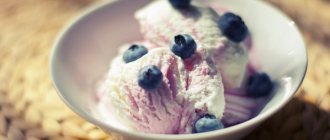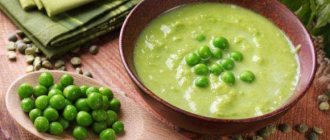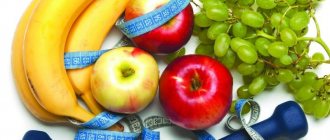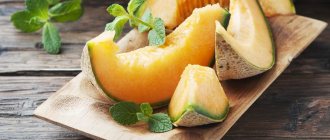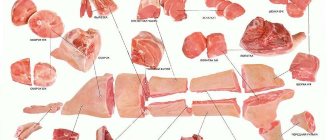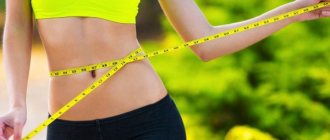What kind of meat can you eat while losing weight? Dietary meats
The meat that is most respected among professional nutritionists is poultry, especially white meat chicken or turkey.
The protein content in them exceeds 20%, while fatty compounds are practically absent. Chicken thighs are characterized by a slightly higher fat content, but this is due to the high concentration of fats in the skin that covers this part of the bird. In addition, poultry meat is easily absorbed by the body and is maximally processed by our digestive system. In practice, this means that the intestines are not clogged with toxins and waste, which has a positive effect on a person’s well-being. Among animal meats, rabbit meat is considered the most dietary product, its fat content is no more than 5%, and its cholesterol level is close to the minimum level. At the same time, the protein content in it significantly exceeds the 20% threshold, which is considered a kind of watershed between dietary types of meat and products that are best not consumed if you have problems with excess weight. On top of that, rabbit meat is rich in minerals and trace elements, as well as vitamins, in particular, it contains the entire group B.
Veal is also one of the types of meat that you can eat while losing weight. Although the meat of adult animals is characterized by a fairly high fat content, the amount in the tissues of young bulls is not so high. It should be noted here that in the case of veal, a competent choice of method of preparing meat is of great importance. It is well known that when frying, the calorie content of a product increases significantly. Therefore, the most correct option would be to boil the meat or bake it in a special sleeve.
Recommendations
Protein is the “foundation” of cells and organs. An increased level of proteins in the body normalizes weight and strengthens muscles. However, for these “building blocks” to function normally, the presence of other important components is required - fats, carbohydrates. Healthy fats are quickly digestible, which are found in vegetable oils, nuts, and seeds.
They take part in metabolic processes, are quickly consumed, and are not stored “in reserve.” Carbohydrates are a source of energy, but they can also be beneficial or harmful. If you want to lose weight, you should replenish your body with carbohydrates using grains, vegetables, and fruits. Sweets are strictly contraindicated, since such carbohydrates provide minimal energy and maximum conversion into fat cells. Only with a balanced diet will the process of losing weight begin quickly.
Is it possible to eat baked meat on a diet? Meat with proper nutrition
Oh, meat... The object of fierce debate between vegetarians of all stripes and “meat-eaters”, a stumbling block for doctors, nutritionists, valeology specialists and other health advocates. And at the same time, it is one of the most delicious and nutritious foods (well, it also depends on the cook, of course). So does proper nutrition include meat, and in what form?
Nutritional value of meat
Of course, meat is a source of proteins, essential amino acids, to a greater or lesser extent fats, as well as minerals, vitamins, and microelements. But meat is different from meat. So, there are the following types of this product:
- Poultry meat is considered one of the most dietary, especially chicken and turkey. But this is talking about pulp without fat and skin, since the turkey skin will “tighten” by 450 kcal/100 g;
- Veal - considered one of the most nutritious, and at the same time light types - 172 kcal;
- Beef is a rather heavy meat, and also very high in calories - 250 kcal;
- High in fat, low in protein and 242 calories;
- Lamb – about 240 kcal and very difficult to digest;
- Rabbit – 183 kcal, recommended for young children to become familiar with meat;
- Nutria is a rather exotic meat for some, but quite light, only 140 kcal.
It is important to remember that the energy value largely depends on the degree of fattening of the animals, so if the pig from which the cutlet was made was well fed, then you will automatically be “well fed”. But “blue” chickens, which were clearly malnourished, are the lowest-fat sources of good proteins without extra calories.
What kind of meat is best to eat on PP?
So, if you decide to monitor your weight, then you need proper nutrition. Meat plays an important role in this system. It is important to remember that the idea of PP is not to starve, but to provide the body with all the necessary substances and energy in accordance with energy costs and desired weight. But since many types of meat contain a huge amount of fat, they have to be excluded - these are pork, lamb, domestic ducks and geese. Only the following remain on the menu:
- Rabbit;
- Chicken;
- Turkey;
- Nutria (if you want);
- Beef (in moderation) and veal.
If someone says that there is nothing to eat at the PP, then show him this list.
But it is important to remember that with a large amount of meat in the diet, the load on the kidneys and liver increases. Therefore, stick to the recommended protein intake - no more than 30% of the total amount, and eat more dietary fiber. This will help protect the kidneys from overload, and the intestines from stagnation of digested food in the body and subsequent intoxication.
Is it possible to eat more meat while bodybuilding?
This question arises for everyone who wants to build more muscle. Indeed, with intensive training, the proportion of protein in a bodybuilder’s diet can reach up to 50%. But this is accompanied by a general increase in nutrition - because you need not only to grow, but also to increase the working weight (that is, the weight of the equipment), and this requires energy. Therefore, a purely protein diet will definitely not help, but rather harm. If a person simply cares about his health and does not strive for huge biceps, then proper nutrition will suit him. Meat is present there in sufficient quantities and variety. If you are not confident in your culinary capabilities or the suppliers of meat products in your area, then use the Grow Food healthy and sports nutrition delivery service - they use only high-quality dietary meat products. In addition, they are ready to completely take on all the kitchen chores, and all you have to do is heat it up and eat.

Advantages and disadvantages
Each diet program has advantages and disadvantages. As for the meat diet for weight loss, if it lasts 7-10 days, there are no undesirable consequences. However, before starting the course, you should take into account the individual characteristics of the body and the presence of chronic diseases.
Pros:
- there is no feeling of hunger, there are no breakdowns;
- the result lasts for a long time provided you follow the correct diet;
- there is no psychological discomfort, since almost everyone likes meat;
- suitable for people with an active lifestyle and heavy physical activity;
- a wide range of permitted dishes, a lot of things can be prepared from meat.
Minuses:
- load on the kidneys;
- due to the lack of fiber, indigestion occurs and diarrhea occurs;
- the condition of nails and hair worsens;
- unbalanced diet;
- weakness;
- decreased tone;
- fast fatiguability;
- increased blood clotting, changes in blood pressure, risk of blood clots;
- production of uric acid, exacerbation of gout;
- load on the heart;
- the appearance of bloating, increased gas formation, and stool disturbances.
Side effects occur when eating too much meat, ignoring contraindications, or violating the timing of the diet.
What kind of meat can you eat? Weight loss
Meat is used for weight loss, the main thing is that it meets certain requirements. It should be skinless, non-greasy and fresh. Nutritionists recommend veal, beef, and poultry for weight loss. You need to choose the appropriate cooking method. To lose excess weight, food must be boiled, baked, stewed with vegetables and fruits. To lose weight, you can choose one of several methods: For 10 days, meat dishes must be consumed in small quantities, but this does not apply to fried foods. You need to remove sugar, flour products, and sweet drinks from your diet. 2 hours before bedtime, you should eat a small piece of boiled meat. This will suppress hunger, and the body will also be saturated with the necessary calories. For breakfast you should eat a piece of boiled beef and another for lunch. For dinner, it is better to choose a vegetable salad or fresh vegetables. Losing excess weight with meat is easy, you just need to eat it in moderation, and also create a suitable diet. During pregnancy Can pregnant women eat meat? Expectant mothers need to take care of a healthy diet while carrying a child, so the amount of vitamins and minerals they consume should be taken into account. Meat is considered a healthy product, but it is not recommended to eat it as a main dish during pregnancy. You need to prepare meat dishes correctly, and also reduce the amount of their consumption to 150 g per day. The main rule is that food should not be heavy, so it should not be combined with other foods. Meat is beneficial during pregnancy, but in small quantities. Thanks to proper nutrition of the mother, a healthy child will be born, protected from various ailments. Meat for children The presence of meat in the diet is beneficial for children. Full development of the body is impossible without protein, amino acids and collagen, which are found in meat dishes. Many amino acids are necessary for the normal growth of children. If parents do not include meat in their child’s diet, then they should find a replacement for this product. Otherwise, there will be a disorder of the nervous system, anemia, and fragility of muscle tissue. Pediatricians advise introducing meat complementary foods in the form of veal or beef, but only when the baby turns 1 year old. This is due to the fact that the body is actively formed in 1-2 years. It is advisable to choose dietary, lean meat. And it's best to boil it. Children under 3 years old will need 65 g.
Example menu
The optimal course duration is 1 week. An extension of 3 days is allowed. If a diet is required for 1-2 months, the diet should be more balanced and thoughtful.
Approximate menu:
| Days | Breakfast | Lunch | Dinner | Afternoon snack | Dinner | Second dinner |
| Monday | Cottage cheese with dried fruits | Rice with vegetables, chicken | Buckwheat soup with meat broth, black bread. | Yogurt | Baked fish, vegetable salad | Apple |
| Tuesday | Chicken omelette | Yogurt, orange | Rice soup with meat broth | Stewed turkey, vegetables, buckwheat | Cottage cheese casserole | Omelette with herbs, kefir |
| Wednesday | Cottage cheese with berries | Pear | Meat soup | Rice with vegetables, veal | Cheesecakes with sour cream | Sauerkraut, boiled chicken |
| Thursday | Oatmeal with dried fruits | Grapefruit | Buckwheat soup with chicken meatballs | Fish with rice, vegetable salad | Steamed cutlets, vegetables | Yogurt |
| Friday | Cabbage salad, boiled chicken | Apple | Rice soup | Chicken aspic, vegetable salad | Turkey pancakes | Kefir |
| Saturday | Omelette with vegetables, cheese, herbs | Tea, oatmeal cookies | Buckwheat soup, black bread | Pilaf with turkey meat | Pancakes with cottage cheese, sour cream | Baked fish with vegetables, yogurt |
| Sunday | Cottage cheese | Steak, egg, apple | Meat broth | Stuffed cabbage rolls with veal meat | Chicken baked in a sleeve, vegetable slices | Kefir |
The first meal is half an hour after waking up, no later than 7:30. In between meals, drink mineral water.
Fatty meat for weight loss. What foods should you not eat when losing weight - list
Nutritionists have developed a list of prohibited foods that are best removed from your diet or limited as much as possible:
- baked goods made from white flour, premium pasta;
- sweets: sugar, jam, chocolate, sweets, cakes, jam, cakes, muffins, cookies;
- smoked meats, fatty meats;
- semi-finished products, fast food;
- alcohol;
- sauces, except vegetable, mustard and horseradish;
- packaged fruit juices, carbonated drinks;
- canned food in oil;
- sweet muesli, ready-made breakfast cereals;
- poultry skin, lard, sausages;
- margarine, mayonnaise, ice cream;
- fatty cheeses, fatty dairy products.
Fatty meats
If you want to lose weight, you should give up fatty meat - pork, smoked meats, sausages, animal entrails, lard. Oily fish, on the contrary, is useful in the diet. If you are losing weight, you should exclude knuckle, pork neck, and bacon from the menu, but low-fat baked tenderloin is healthy. It is correct to eat lean meat - chicken, beef, turkey, rabbit. Before cooking, it is necessary to trim off excess fat from them, bake, boil or steam them without adding excess salt.
Bakery products
Muffins, pastries, and white bread are carbohydrate products that the body needs for energy. Products made from processed flour are considered “fast” carbohydrates, while the body needs “slow” ones that take a long time to digest and keep you full. Baking is quickly digested, releases glucose into the blood, and the body experiences hunger. Fast carbohydrates that are prohibited when losing weight include sweets. On a diet, you cannot eat sugar, jam, honey, jams, marmalade, or desserts.
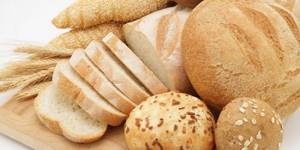
Sweet fruits
Sweet fruits are prohibited when losing weight. They are considered healthy, dietary, with a lot of vitamins, although they contain carbohydrates and sugar. On a diet, it is better to choose sour varieties - grapefruits, kiwis, tangerines, pomegranates, berries. Grapes, bananas, melon, pears, peaches, and apricots should be excluded from the menu due to their high sugar content. When choosing between fresh fruit and freshly squeezed juice, it is better to choose the first type. The fruits, especially apples, retain fiber, which is beneficial for digestion, and the juice has a high glycemic index.
Carbonated drinks
Sweet and not very carbonated drinks are prohibited when losing weight due to their composition. They contain a lot of sugar, flavorings, dyes and preservatives. A glass of soda contains up to six teaspoons of glucose; with constant consumption of drinks, the risk of obesity and diabetes develops, and there is a chance to “get used” to them. Preservatives, dyes, flavors are also dangerous to health - they increase the likelihood of asthma, cardiovascular diseases, osteoporosis, diseases of the reproductive system, kidneys, stomach, and tooth enamel.
Starchy vegetables and fruits
Not all vegetables and fruits are healthy to consume on a diet. Sweet or starchy ones do not contribute to weight loss and are prohibited due to the presence of sugar and complex carbohydrates, which break down into glucose and lead to insulin spikes. The following are prohibited:
- bananas, figs;
- potatoes - it is better not to eat them at all, and if you want, bake them whole in their skins, but do not boil or fry them;
Porridges and cereals
Porridge and processed grain cereals are prohibited when losing weight. The list of undesirable foods includes:
- pasta made from first and highest grade flour;
- white rice - it is better to eat brown, red or black instead;
- white rice porridge;
- semolina and couscous.
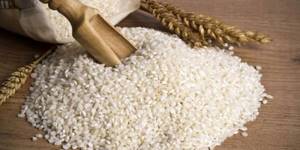
Ready semi-finished products
The category of processed foods includes semi-finished products and processed foods. Prohibited foods for weight loss include sausages, sausages, canned food, frozen cutlets, dumplings, dumplings, pasties. Sausages contain a lot of salt and preservatives, but little protein. Processed foods - canned food, dumplings - are not suitable for weight loss, because the body spends too little energy on digesting them, and receives a lot of calories. Instead of processed ones, include whole, home-cooked ones in your diet with limited salt.
Alcohol
Alcohol is not dietary. It slows down metabolism, contains 7 kcal per 1 ml and has useless calories because it does not participate in metabolism. Alcohol stimulates the appetite, calories from drinks quickly turn into energy, and you want to “chew them up” with something. Beer with phytoestrogens and sweet cocktails with liqueurs and juice (sugar and fat) are prohibited. Alcohol causes obesity, decreased potency, and increased abdominal volume in men. Without harming your figure, you can drink a glass of dry wine a day, after eating or accompanying it with a light dish for dinner.
Fast food
The next category of prohibited food includes fast food. The first reason why it should be removed from the diet is a quick snack - while running, a person does not have time to realize that he is full, so he eats more. The second reason is the content of starch, flavor enhancers, unhealthy carbohydrates and fats in instant foods. The result is low nutritional value and high calorie content. It will not be possible to lose weight and maintain your basal metabolic rate.
Permitted and prohibited products
Daily calorie intake is 1200 units. With increased physical activity, the indicator is increased by 300 kcal. The menu is compiled taking into account permitted and prohibited products.
What to eat:
- lean meat;
- fish;
- eggs;
- seafood;
- liver;
- heart;
- language;
- fermented milk products;
- oatmeal, buckwheat, rice;
- vegetables (potatoes in limited quantities);
- unsweetened fruits;
- vegetable oil;
- unsweetened drinks, still mineral water.
What is prohibited:
Your daily diet should contain healthy fats and carbohydrates, but the main share comes from protein products.
What kind of meat can be used on pp. Pork

Pork is one of the most controversial meats. It was banned in many countries. There are quite a few rumors about the dangers and benefits of pork. But are they true? After all, statistics show that the popularity of pork is not inferior to other types of meat.
To understand why pork is banned, it is necessary to study its composition.
Pork varieties
In the food industry, it is customary to distinguish 2 main types of pork. 1st grade pork is the most healthy and dietary meat, which includes cuts from the back, shoulder, lumbar, sternum, as well as ham. This meat is eaten independently - it is stewed, fried, boiled, baked.
The second grade of pork is the fattier parts of the pig's body that have more fiber. These include shank, shank and neck. Most often, such parts are used for preparing minced meat or adding to soups.
Divide pigs into categories based on their sex and age. They can pay attention to the weight and amount of fat in the animal.
Thus, the following varieties of pork are distinguished: meat of boars, suckling pigs, young animals and such products that are used mainly for processing.
Vitamins and minerals in pork
The vitamin composition of pork is superior to beef. Pork contains calcium, magnesium, phosphorus, potassium, sodium, sulfur, zinc and iodine.
Lard has brought particular fame to pork. But this does not mean that pork is a fatty product. If you remove the fat layer from the carcass, leaving clean meat, then the calorie content of pork will be about 350 kcal. Pork meat without fat is lean and healthy. This feature of pork makes it a universal product: both fatty and dietary. However, if you do not remove fat layers from meat, then the calorie content of pork will not please you. It will be approximately 490 kcal.
The amount of protein in pork makes it attractive to athletes. It is also recommended to add pork meat to the diet of children. Protein is the main building material that helps form tissue in the body.
The benefits of pork
The first thing that all nutritionists pay attention to is the ease of digestibility of pork. Its fat is lard, its composition is ideal for the human body; it is quickly absorbed and saturates the body with energy and strength. Lard puts a slight strain on the digestive tract, which provides protection against intestinal pathologies and indigestion.
The meat itself contains some bad cholesterol, since its entire supply is in lard. Therefore, if you have heart or vascular diseases, it is better to eat lean pork. And when consumed regularly, pork feet help increase breast milk production in women. That is why doctors advise pampering a woman with jellied meat once or twice a week during lactation.
Recipes
Dietary dishes are prepared from lean meats with the addition of vegetables, natural spices, herbs and sauces. Preparing a tasty and healthy dish will take from 30 minutes to 3 hours, depending on the type of product and the chosen recipe.
Chicken in tomato sauce
Cut 1 fillet (half a chicken breast) into pieces with a side of 2–3 cm. Pour boiling water over 1–2 tomatoes (100 g of tomatoes), peel them and chop with a blender. Finely chop a small white onion, cut a medium carrot into semicircles or grate on a coarse grater.
Place pieces of meat in a deep cast-iron frying pan and fry lightly (you can add 5 g of butter). Add onion to the pan. Pour tomato puree over the fillets, add carrots to it. Wait until it boils, season with curry and paprika, pepper. Add 300 ml of boiling water to the frying pan. Simmer over low heat until done.
When serving, add salt and garnish with finely chopped cilantro and parsley.
Turkey salad
Boil 200–300 g of skinless turkey fillet. There is no need to add salt to the pan, but you can season the broth with black pepper and coriander. After cooking the meat, cool it and cut it into small strips.
Cut 2 large tomatoes into slices or cubes, add 2 chopped sweet peppers of different colors. Cut 70–80 g feta cheese or unsalted cheese into small pieces. Mix vegetables, cheese and fillet, season to taste, add 1 tbsp. olive oil or oil and balsamic vinegar dressing. If desired, you can add greens to the salad.
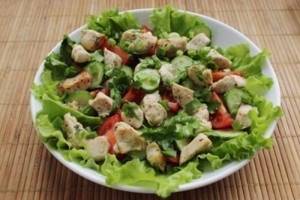
Baked veal
Wash, dry and cut 0.8–1 kg of veal into small pieces. Roll the pieces of meat in a mixture of 5 g ground black pepper, 3-5 g dried chili and 12-15 g dry thyme.
To prepare the marinade, mix 100 ml of cherry or pomegranate juice, 40–50 ml of cognac and 3 tsp. pre-melted honey. Add the marinade to the veal and stir. Cover the container with meat with a lid or cling film. After an hour at room temperature, place the veal in the refrigerator for another hour.
After marinating, preheat the oven to +170…+180°C. Grate a medium carrot. Pour the marinade into a polymer baking bag and place the carrots. Place marinated meat on top. Close the sleeve and place in the oven for 60-80 minutes.
Rabbit stew in a slow cooker
Wash and dry 500–600 g of rabbit fillet. Cut it into medium or large pieces. Place it in a multicooker bowl, season with black pepper and coriander, and begin preparing the vegetables.
Separate 200 g of cauliflower into small florets and boil for 5-6 minutes in lightly salted hot water. Immediately after cooking, drain the water through a colander. Peel 2 onions, a carrot and 2-3 cloves of garlic. Cut the onion into quarter or half rings, and the garlic into thin slices. Grate the carrots on a coarse grater.
Place vegetables (except cabbage) on top of the meat. Season the vegetable layer. Tear the cabbage into small branches and sprinkle on the vegetables. Salt and season the stew, sprinkle with finely chopped dill (4-5 sprigs).
Pour 100 ml of natural yoghurt and 600–700 ml of water over vegetables and meat. Do not mix layers. Turn on the “Stew” program and leave the stew for 45–50 minutes in the slow cooker. After cooking the dish, leave it for another 20 minutes, then stir and serve with herbs.
The dish can be prepared not only in a slow cooker, but also in a duck pot, a thick-walled deep frying pan or a pressure cooker.
Soy soufflé with chicken
Cook and collect the meat from 1 small chicken or 4 skinless thighs. Soak 100 g of salt goulash. Grind soft goulash and chicken through a meat grinder. Grind the mixture with a spoon until smooth, add black pepper and salt.
Take 3 eggs and separate the whites from the yolks. Add a bowl of meat and soybeans, all the yolks, 4 tbsp. medium fat cream and 1-2 tbsp. butter. Beat the whites into a thick foam and carefully fold them into the minced meat.
Lightly grease a baking dish or special ceramic soufflé molds with oil. Place the soufflé mixture in them.
Bake at a temperature of +160...+180°C for 30-35 minutes. Serve in baking dishes, garnished with finely chopped parsley.
Doctor's opinion
Specialists support a healthy diet, an active lifestyle, and the absence of bad habits. Regarding the meat diet, you can find different statements, but most of them are negative.
Angelina Volk, gastroenterologist, Moscow
“For the normal functioning of the body, proteins, carbohydrates, and fats are required. Of course, we are talking only about useful components. When the idyll is disrupted, metabolic processes fail and adipose tissue begins to appear. With a sharp exclusion of fats and carbohydrates from the diet, theoretically they should be consumed from already deposited fats, but this is not always the case. A repeated disruption of the usual metabolism is perceived by the body as a dangerous situation, and it again begins to stock up for a “rainy day.”
Instead of easing the burden on the digestive organs, a high-protein diet puts stress on them. Meat is difficult to digest, the stomach, pancreas, liver, duodenum, gall bladder, and kidneys suffer. Under such pressure, the whole body begins to malfunction, which cannot but affect well-being and health. Excessive consumption of protein is dangerous to health, so a meat diet is not the best option!”
Contraindications
A protein diet is not suitable for everyone; there are several significant contraindications:
- pregnancy;
- feeding;
- kidney and liver diseases;
- chronic gastrointestinal diseases;
- cardiovascular pathologies;
- protein intolerance;
- diabetes;
- increased levels of cholesterol, uric acid;
- adolescence and after 40 years;
- lactose intolerance;
- depression;
- prostration;
- bad feeling;
- avitaminosis;
- low immunity.
It is contraindicated to follow a strict diet for more than 10 days. You cannot continue the course if side effects occur.
